Managing Your Own IT
- Tommy Wald

- Apr 25, 2024
- 4 min read
Updated: Jul 8, 2024
The Good, the Bad, and the Ugly.
Businesses today rely heavily on IT and technology. With 82% of small businesses experiencing increased productivity after implementing reliable IT solutions(1) it's clear that technology is crucial for their operations.
And managing this technology has become a key focus for these IT-dependent businesses. Which typically is provided by either an in-house, or outsourced IT support resource.
In this blog, we’re going to discuss the pros and cons of in-house IT support.
To begin with, in-house IT support begins to make sense when a company grows to upwards of 100 users. At this size there is most likely enough IT support issues and projects within the business to justify the expense of another full-time employee.
The in-house IT person if often hired as a dedicated IT support resource. Or, in some cases this IT support may fall upon an employee that was hired for another job but has the apparent skills to provide tech support.
So, let’s break down the good, the bad, and the ugly of bringing IT support in-house.
The Good:

There are various advantages for bringing IT support in-house, especially when there are specialized technologies or software.
Control and Customization: By managing IT internally, businesses retain full control over their systems and infrastructure. This autonomy allows them to tailor solutions precisely to their unique business needs, whether it involves selecting hardware, software, or designing network configurations. This level of control fosters adaptability and agility in responding to evolving requirements and opportunities.
Immediate Response: With an internal IT team in place, businesses enjoy immediate access to support whenever technical issues arise. This facilitates prompt troubleshooting and resolution, minimizing downtime and disruptions to business operations. Having on-site IT staff ensures swift attention to problems, promoting smoother workflows and heightened productivity.
Deep Understanding of Business: Internal IT staff often cultivate an intimate understanding of the company's processes, goals, and challenges. This depth of insight empowers them to implement IT solutions closely aligned with business objectives, fueling innovation and growth. Collaborating closely with other departments enables internal IT teams to identify technology-driven improvements and provide tailored support, driving organizational success.
The Bad:
While in-house IT support may provide a more specialized form of tech support, it also comes with its share of challenges and drawbacks:

One-Person Show: In many small businesses, IT responsibilities may overwhelm a single individual or a small team. This scenario can lead to burnout, overload, and a lack of specialized expertise in crucial areas. Juggling all aspects of IT infrastructure, from network administration to cybersecurity, can be daunting for a limited staff, undermining the efficacy of IT management efforts.
Lack of Training and Expertise: Without adequate training and ongoing professional development, internal IT staff may struggle to keep pace with rapidly evolving technologies and best practices. This can result in outdated systems, security vulnerabilities, and compliance risks. Limited budgets often restrict investments in comprehensive training programs, leaving IT staff ill-prepared to tackle emerging challenges effectively.
Availability Constraints: Internal IT staff may not always be available to address technical issues, especially during off-hours or when overwhelmed with other tasks. This can lead to delays in troubleshooting and extended periods of downtime for critical systems. Small businesses with constrained IT resources may struggle to provide round-the-clock support, exposing them to disruptions that compromise business operations and customer satisfaction.
The Ugly:
In addition to ‘the Bad’, managing IT internally can expose your business to more significant risks and pitfalls.
Extended Network Downtime: When things go awry, the in-house team often lacks the resources or tools to remediate network outages or diagnose issues with key applications. Consequently, during a significant problem or cyberattack, swift resolution options may be limited, resulting in prolonged downtime and productivity losses.
Network Reliability: Internally managed IT can leave businesses vulnerable to network outages and poor performance. Without adequate expertise or tools, the business may be subject to slow and unreliable performance, and recurring IT issues that don’t get resolved.

Cybersecurity Risks: With cybercriminals increasingly targeting small businesses, insufficient knowledge and action on cybersecurity best practices can leave them vulnerable to data breaches, financial losses, and reputational damage. Absence of a comprehensive cybersecurity strategy may hinder the detection and mitigation of threats, endangering sensitive information and customer trust.
* * * * * *
In conclusion, while managing IT internally offers advantages such as control and immediate response, it also presents significant challenges and risks. This requires carefully evaluating the pros and cons and assessing capabilities before deciding on IT management strategies. Prioritizing security, reliability, and efficiency of IT infrastructure is paramount for sustaining business success in the digital age.
Need help in determining if managing your own IT is a good idea? RIATA can help by filling in the gaps where your in-house IT person is understaffed or is inexperienced. Contact RIATA today and we’ll help you develop a plan for managing your own IT successfully.
About the Author: Tommy Wald is CEO of RIATA Technologies, a Managed IT Services Provider headquartered in Austin, TX. He can be reached at TWald@RiataTechnologies.com or (737) 249-9697.
(1) According to a survey by Small Business Trends, 82% of small businesses experienced increased productivity after implementing reliable IT solutions.





Comments